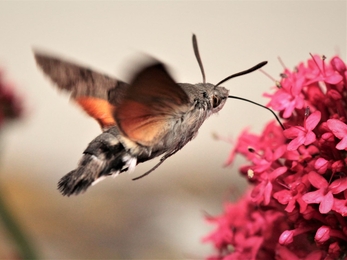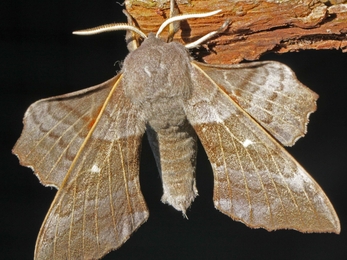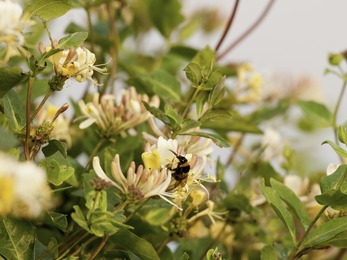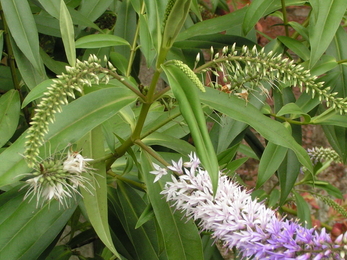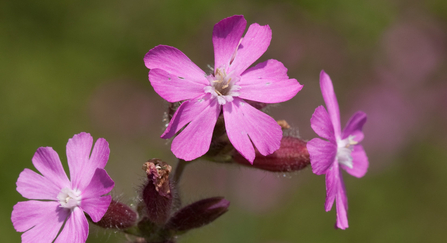Whilst the majority of our moths conform to our expectation of being active at night, some behave like butterflies and take advantage of some of the popular ‘butterfly’ garden plants such as buddleia or red valerian, Centranthus rubra. One of our day flying moths which, in swarm years, draws most attention is the hummingbird hawk moth, Macroglossum stellatarum, fluttering its wings so quickly that it can make an audible hum.
Although some moths such as the Poplar Hawk moth, Laothoe populi do not need sustenance and as adults refrain from feeding at all, most adult moths feed on nectar to sustain their flight long enough to lay eggs in anticipation of the generation. A few wild-flowers and garden plants are noteworthy for their association with moths, but moths almost certainly feed on a much wider range of nectar rich flowers. Like their very presence, the value of moths as pollinators is often overlooked, research** based on pollen analysis is demonstrating their role in crop pollination.

